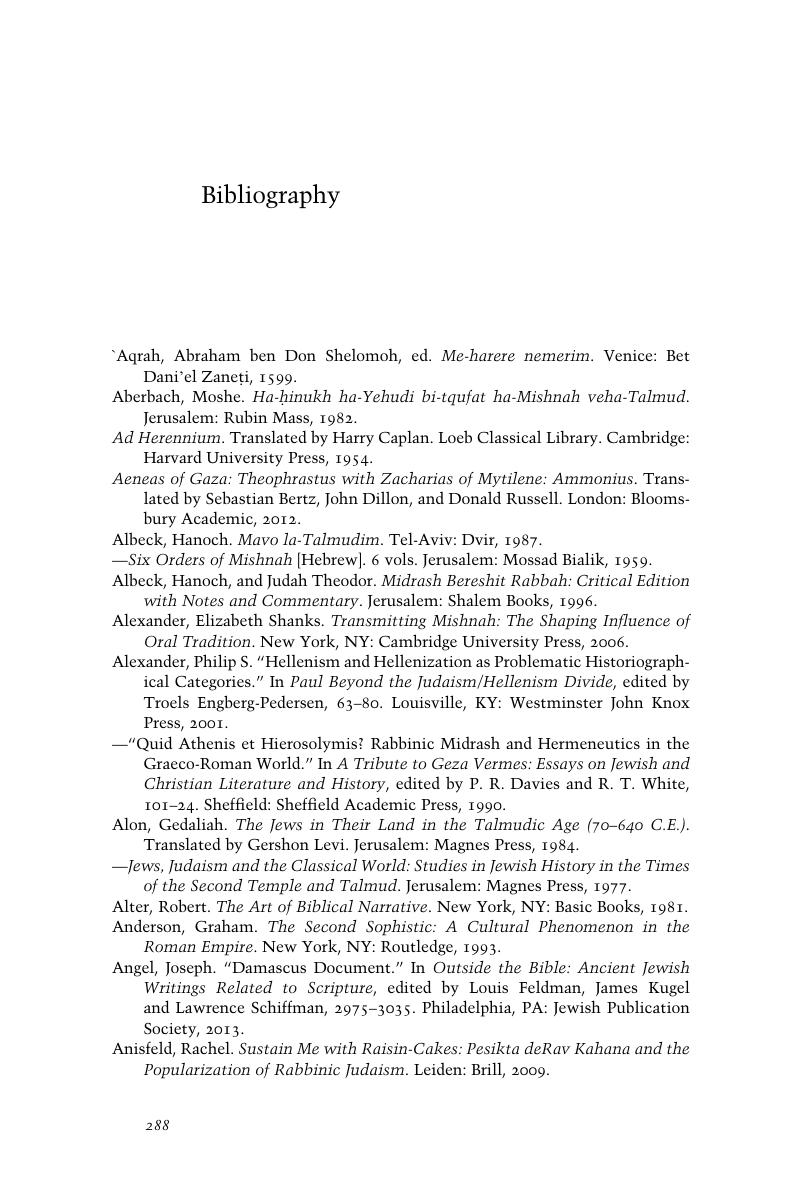Book contents
- Rabbis and Classical Rhetoric
- Rabbis and Classical Rhetoric
- Copyright page
- Dedication
- Contents
- Preface and Acknowledgments
- Translations and Abbreviations
- Introduction
- 1 Rabbis as Orators: The Setting and Structure of Rabbinic Homilies
- 2 Rabbis as Instructors: Rhetorical Arrangement and Reasoning in the Yerushalmi
- 3 The Agonistic Bavli: Greco-Roman Rhetoric in Sasanian Persia
- 4 Progymnasmata and Controversiae in Rabbinic Literature
- 5 Talmudic Topoi: Rhetoric and the Hermeneutical Methods of Midrash
- 6 The Role of Lawyers in Roman and Rabbinic Courts
- 7 Why Are There Lawyers in Heaven?
- Conclusion: Rabbinic versus Christian Approaches to Rhetoric
- Bibliography
- Index of Sources
- Index of Names and Subjects
- References
Bibliography
Published online by Cambridge University Press: 01 December 2017
- Rabbis and Classical Rhetoric
- Rabbis and Classical Rhetoric
- Copyright page
- Dedication
- Contents
- Preface and Acknowledgments
- Translations and Abbreviations
- Introduction
- 1 Rabbis as Orators: The Setting and Structure of Rabbinic Homilies
- 2 Rabbis as Instructors: Rhetorical Arrangement and Reasoning in the Yerushalmi
- 3 The Agonistic Bavli: Greco-Roman Rhetoric in Sasanian Persia
- 4 Progymnasmata and Controversiae in Rabbinic Literature
- 5 Talmudic Topoi: Rhetoric and the Hermeneutical Methods of Midrash
- 6 The Role of Lawyers in Roman and Rabbinic Courts
- 7 Why Are There Lawyers in Heaven?
- Conclusion: Rabbinic versus Christian Approaches to Rhetoric
- Bibliography
- Index of Sources
- Index of Names and Subjects
- References
Summary

- Type
- Chapter
- Information
- Rabbis and Classical RhetoricSophistic Education and Oratory in the Talmud and Midrash, pp. 288 - 318Publisher: Cambridge University PressPrint publication year: 2017



